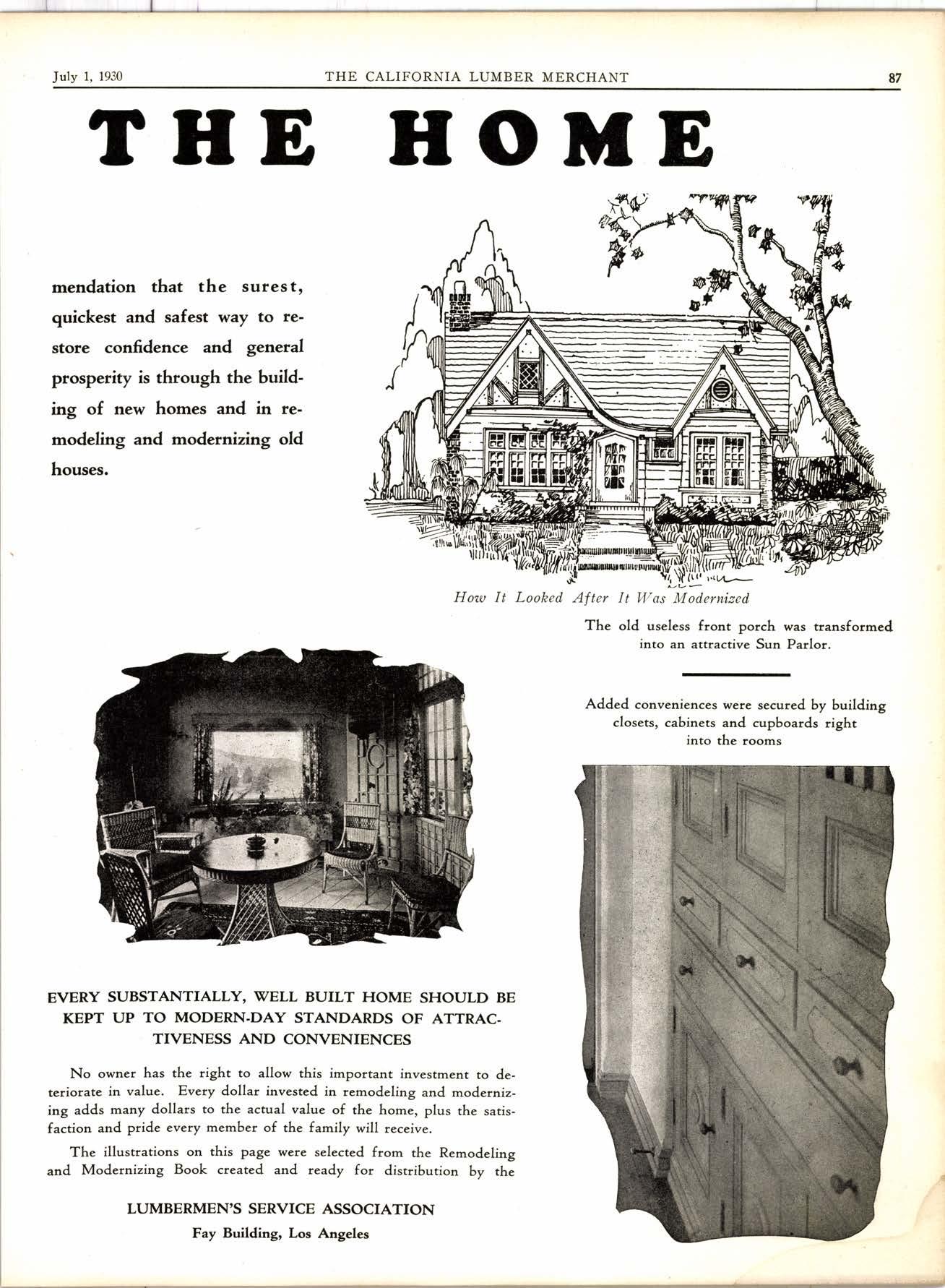
4 minute read
Arizonoi Lurnber Industry
By John A. Johnson, John A. Johnson Lumber Co., Phoenix, and Arizona Lumber & Timber Co.' Flagstaff.
Excerpts from paper read at the Annual Meeting of the Lumbernren's Club of Arizona rccendy held at Douglas, Arizona.
The first mill of any importance in Arizona was built in Flagstaff in Novemter, 1881, by Edward Ayers. It was takCn over two years later by the Riordan brothers and has been operated continuously since then by them as "The Arizoni Lumber & Timber Company." This mill is the oldest established manufacturing plant in Arizona. It was built primarily for the purpose of producing ties for the construction of the old Atlantic and Pacific Railway, many of these ties were, however, hewn ties and were cut in the timber mainly along the right of way before the railroad line went through Flagstaff. The capacity of the mill at this time was approximately 60,000 feet per day; the stumpage paid was about fifty cents per thousand and there were no restrictions in regard to cutting, the operators generally tookthe best tiees and did not think of handling any timber such as we are compelled to take today. These trees were cut quite a distance from the ground which made it easier for the saw, and at that time it was not compulsory to pile the brush and burn it.
The stumpage rates paid today are in the neighborhood of four dollirs per thousand and to this should be added the cost of piling thl brush and t'urning it, approximately two dollars, maliing cost of stumpage at the present time about six dollars per thousand. The operator is now compelled by government regulations to cut the trees six inches from the ground, and, after the trees are cut, to pile the accumulated brush, and at such time as the government inspector believes there is the least danger offire-which is generally early in the fall and late in .the spring-the opelator is notified to send a crew of men in and burn this biush. The government inspector goes through the timber which is to be cut and marks the trees for cutting; the operator has no choice in the matter but must cut and send t6 the mill all trees that are marked. In the Arizona forests where there are many "blackjacks" this is an expensive operation as most of the "blackjack" logs yield practically nothing when run through the mills.
Veiy few people in drizona, excepting those possibly in thg northern part of the state realize the magnitude of the lumber industry in this state, and the immense benefit that is derived therefrom to the state. It will probably be surprising to some of you to know that there are approximaiely 25 mills operating in Arizona, cutting on an average of onl hundred and sixtymillion t'oard feet per annum, ninety-five per cent of this amount being produced by the mills-at Flagstafi, McNary, Williams, and Standard. The lumber industry in Arizona has grown by leaps and bounds during the past few years and for the past several years has eiceede-d that of New Mexico. The approximate investment of the five large rnills in the state is about ten million dollars; the number of men employed about three :*hgpsand with approximately nine thousand dependents.
These mills operate one hundred and seventy miles of railroad, each having a complete railroad organization of its own and together operate deventeen locomotives and about three hundred logging cars. The estimated cost of building a railroad from thi mill to the timber is from ten to fifteen thousand dollars per mile.
The state and county taxes paid by the lumber industry in Arizona ar4ount to about one hundred thousand dollars per annum, and they pay for timber purchased from the state and government approximately four hundred thousand dollars each year, of which a considerable percentage goes to the State University at Tucson and a propef Percentage for the building and maintenance of roads in the counties in which the mills are located.
The approximate value of theoutput of the Arizona mills is in the neighborhood of five million'dollars. The t'ulk of the supply of the mills in Northern Arizona would approximaie one million five hundred thousand dollars. They have an annual payroll oftwo million five hundred thousand dollars.
The figures which I have given you are based on the operations at full production and are approximately correct. Full production is one of the greatest essentials to the success of the lumber operator, and reduced production and enforced shutdowns, by reason of the terrific overhead expense which always exists in the lumber business, soon ""t ,rp whatever proht might be derived from aciive operations.
The government and state contracts all carry a clause protecting the government and state against all damage-to erowing iimber; restrictions as to the cutting and rules for dafeguaiding the forest in re-production. If a sale is made to 'cover a period longer than a year ortwo the government and stite have the option of increasing the stumpage. price, the operator being obliged to agree in the_ purcha-se iontract thal they will render to the forestry and state de' partments detailed statements of cost of production and net ieturns, it being the policy of these departments. to permit the mills to realize only what they consider a fair return on the investment so that if the lumb-er prices advance the department is in position to advance the stumpage price accordingly.
The market of the Arizona mills extends from Coast to Coast, Finish and Shop Lumber being shipped to Missouri, Iowa, Illinois, Wisconsin, Michigan, Ohio, Pennsylvania, and New York; Finish and Common grades to New Mexico, Colorado, Kansas, Oklahoma, Texas, and some points in California. Before the war frequent export shipments were made to England and Scotland. It might be of interest to you to know that probably sixty per cent of the
(Continued on Page 921










